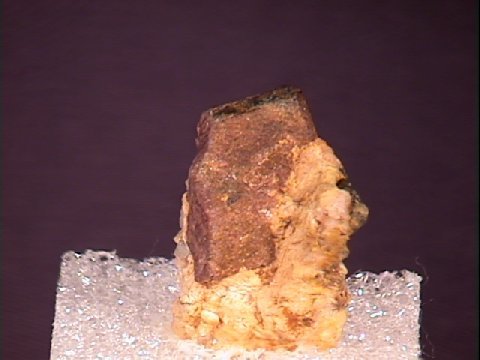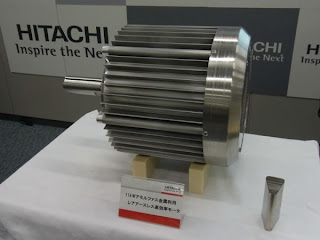UK (phys.org) - University of York scientists will lead an international team to develop methods of extracting platinum group metals (
PGM) from plants. Researchers in the University’s
Green Chemistry Centre of Excellence and the Centre for Novel Agricultural Products (
CNAP) with support from Yale University, the University of British Columbia, and Massey University in New Zealand will investigate
phyto-mining. Phyto-mining involves growing plants on mine waste materials to soak up PGM into their cellular structure. Initial studies show these phyto-mined PGM plant cells can be
turned into materials for a variety of industrial applications, most notably catalytic converters for vehicle emissions
control.
 |
| Phyto-mining platinum from hyperaccumulator plant Iberis. |
According to the University of York's Professor James Clark, “We are looking at ways of turning these residual metals into their
catalytically active form using the plants to extract them from the mine
waste. The plant is heated in a controlled way with the result that the
metal is embedded in a nano-form in the carbonised plant. The trick is to control the decomposition of the plant in a way
which keeps the metal in its nano-particulate or catalytically active
form. ”
Researchers will investigate about 400 species of plants known as
hyperaccumulators, which take larger-than-normal amounts of toxins, including heavy metals from the soil. Plants such
as willow, corn and mustard can accumulate relatively large amounts of these metals.
CNAP Professor Neil Bruce stated, “The ability of plants to extract
PGMs from soil and redeposit the metal as nano-particles in cells is
remarkable. This project will allow us to investigate the mechanisms
behind this process and provide a green method for extracting metals
from mine
tailings that are currently uneconomical to recover.”
Source: 'Mining' for metals using Nature's machines (
Reliability: High)
Comment: The word phyto-mining was coined in 1977, and was implemented as an environment solution for contaminated sites. This research into phyto-mining as a method of
extracting strategic minerals has exciting possibilities. Any method by which strategic and rare earth
minerals can be reused and recycled has the potential to provide both ecologic and economic benefits. Additionally, the ability to re-use these phyto-mined byproducts offers alternative sources for PGM.
Professor Neil Bruce, of
CNAP, added: "The ability of plants to extract PGMs from soil and
redeposit the metal as nanoparticles in cells is remarkable. This
project will allow us to investigate the mechanisms behind this process
and provide a green method for extracting metals from mine tailings that
are currently uneconomical to recover."
Read more at:
http://phys.org/news/2012-09-metals-nature-machines.html#jCp
"We are looking at ways of
turning these residual metals into their catalytically active form
using the plants to extract them from the mine waste. The plant is
heated in a controlled way with the result that the metal is embedded in
a nano-form in the carbonised plant.
"The trick is to control the decomposition of the plant in a way which
keeps the metal in its nano-particulate or catalytically active form.
Catalysis is being used more and more in industrial processes and
particularly for emission control because of the demand for cleaners
cars, so 'phyto-mining' could provide a sustainable supply of
catalytically active metals."
Read more at:
http://phys.org/news/2012-09-metals-nature-machines.html#jCp
"We are looking at ways of
turning these residual metals into their catalytically active form
using the plants to extract them from the mine waste. The plant is
heated in a controlled way with the result that the metal is embedded in
a nano-form in the carbonised plant.
"The trick is to control the decomposition of the plant in a way which
keeps the metal in its nano-particulate or catalytically active form.
Catalysis is being used more and more in industrial processes and
particularly for emission control because of the demand for cleaners
cars, so 'phyto-mining' could provide a sustainable supply of
catalytically active metals."
Read more at:
http://phys.org/news/2012-09-metals-nature-machines.html#jCp


















